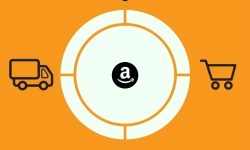Multichannel selling explained
The multichannel comes with one main principle! Which is optimizing a particular business across multiple channels consequently? Maximize your revenue by offering the customers greater choice, allowing them to engage with your business through different platforms.
Multichannel selling also called Omni-channel selling; it is the practice of offering customers a variety of platforms from which they can purchase specific products. Earlier, multichannel shopping or multichannel retail had a different meaning altogether. It referred to the businesses that offer their products both online and offline. Therefore it had little relevance to that business that was operating solely online. However today multichannel retail is becoming an important factor for those who have no catalogs and no physical shops and are operating in the virtual world as multi-merchant online platforms.
If you sell your product in more than one location, it can be a brick-and-mortar store (or stores), your own website, eBay, Amazon and many other marketplaces which make you a multichannel seller. As It is almost important in today's retail environment that you give your customers options to buy from different places but same product; therefore most retailers are inherently multichannel merchants.
CONS
Stock control
It is much more difficult - Managing all the different channels effectively! And you don’t want to compromise on customer service, which can be hard to get in the way right for beginners. Sellers might end up double-selling an item; hence Stock control is particularly tricky as they might be selling the same item on multiple channels.
Increased Cost
Increasing the marketing channels is directly proportional to cost, the most marketing channels the more will be the fees associated with them. Although for brick and mortar shops the cost will be that of maintenance and rent only. And for marketplaces the percentage fees associated varying according to the rules set by different platforms.
Fulfilling Customer’s expectations
It is definitely not easy to provide the customers with the same experience through different marketplaces. Customers see your brand as a common entity in all the different channels and it’s the trust in the specific brand and comes along with its expectations. A customer expects a specific experience from your brand and not from the channel. Remember, a brand name comes with the responsibility to fulfill the expectations.
PROS
Better Analytics and data collection
Analyzing the consumer behavior is of utmost importance. In predicting future growth and increasing present sales, the data analysis can show a true picture of where the seller stands. Hence multi-channel selling is also an excellent way of data collection of the consumer.
Increased Profit
Through multi-channel selling, you should available 24*7 to the customer and will be more visible. With this, the chances of your product being sold also increase with an increase in channels. Like if a customer struggles to find a size of T-shirt in one particular store, then you can give him other options too.
Different channels for different products
For example, if your brand is selling more than one type of products, say shoes and clothing, than you can sell shoes on a marketplace that specifically sells shoes of different brands and it goes for clothing. In this approach, you have a target audience for a specific product. Consumers sometimes avoid marketplaces which offer more than that is required by them.
Despite few disadvantages, multichannel selling has become an important requirement for sellers to reach out to different customers, from different geographical locations and provide an extraordinary consumer experience.







